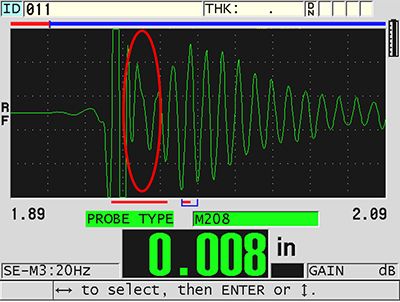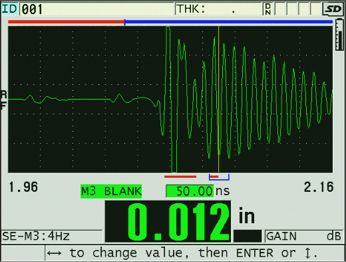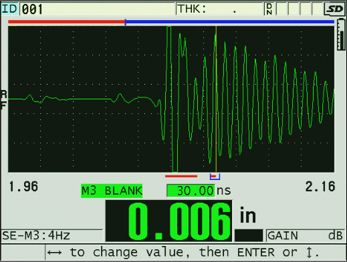Small-diameter metal and plastic tubing
Recommended UT Thickness Gage, Equipment, and Inspection Setup
For tubing with a diameter of less than 0.125 in. (3 mm), we usually recommend using a 20 MHz focused immersion transducer. To efficiently transmit sound energy into a small-diameter part, it’s necessary to focus the sound into a narrow beam. Focused immersion transducers use a contoured acoustic lens along with a column of water to focus the sound beam for increased sensitivity. The RBS-1 bubbler is a desktop immersion-tank and probe fixture that creates a steady column of water and helps keep the test piece centered in the sound beam. To create a consistent, low-flow water column, the immersion tank must be used with one of the bubbler nozzles, which should be matched to the application. A B103 V-notch bubbler simplifies tubing concentricity checks, since it enables you to rotate the tubing to quickly measure the thickness around the entire circumference and slide the tubing over the probe to measure the thickness along the length of the part. | 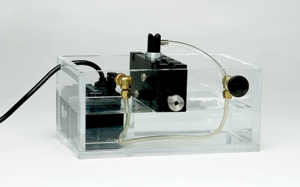 B103 V-notch bubbler with the RBS-1-15 recirculating bubbler system |
We recommend using an Olympus 38DL PLUS® or 45MG ultrasonic thickness gage (using the 45MG-SE single element and 45MG-WF waveform software options) along with a 20 MHz M316-SU immersion transducer with a 0.75 in. (19 mm) focus
Small-diameter tubing inspections can be easy when using the proper equipment and correctly calibrated instruments, but measurement errors may still occur. Here are 3 simple tips to help you avoid common issues.
Use the IF Blank function to avoid the interface echo trailing edge
The IF Blank setting can be adjusted to select the strongest pair of signals. Although the selected pair of signals changes as the IF Blank is adjusted, the time of flight between successive back wall echoes remains the same.
Varying IF Blank settings results in the same thickness measurement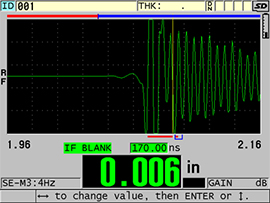
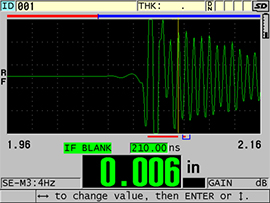
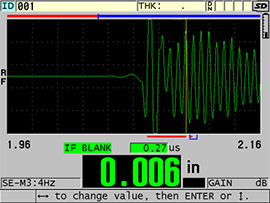
Watch for varying back wall signal amplitude when using a focused immersion transducer
Don’t set the M3 Blank out too far
Related Content
The (Sono)pen Is Mightier: 3 Tips to Improve Your Measurements
On the Cutting Wedge: Using Contoured Wedges to Inspect Welds in Small-Diameter Pipes
2 Challenges of High-Temperature Thickness Gaging and How to Solve Them
Get In Touch

